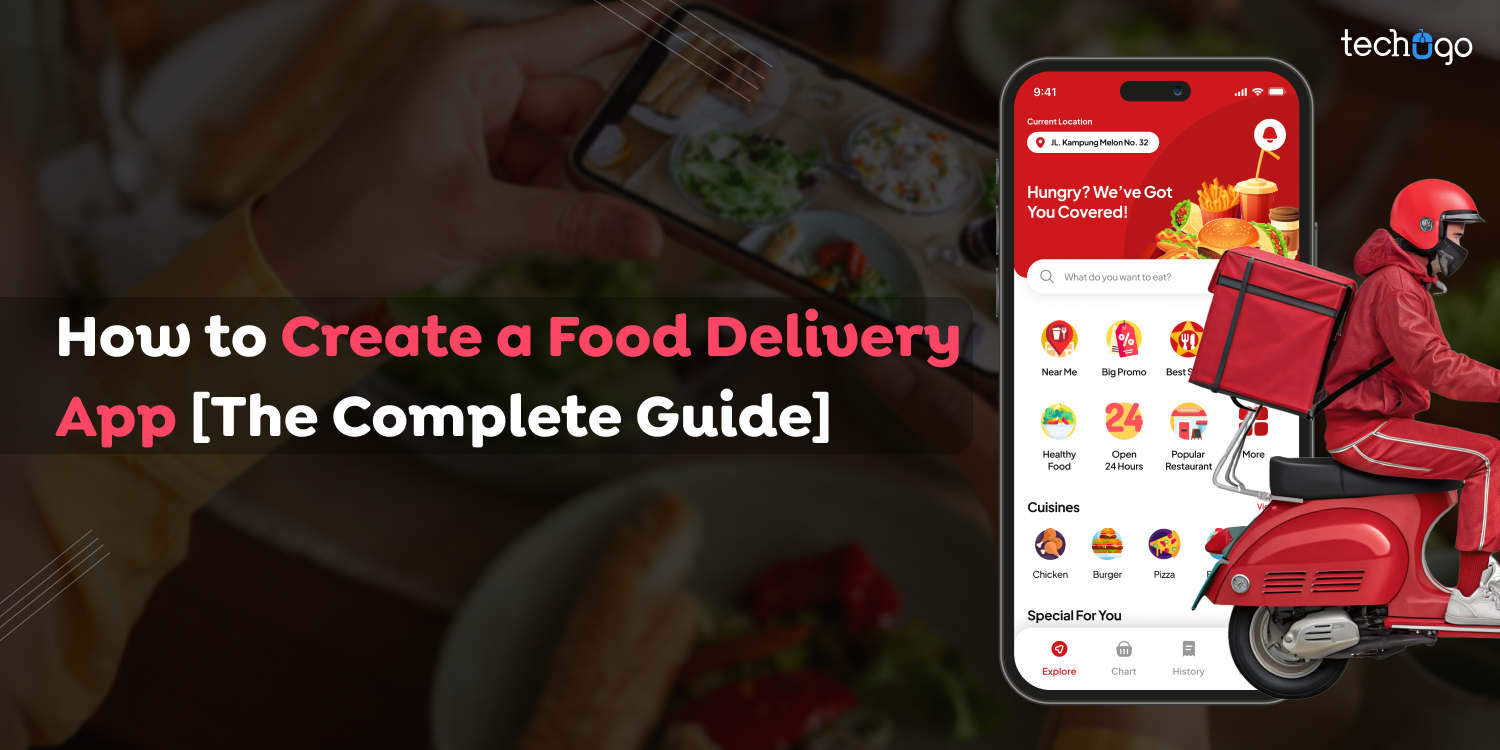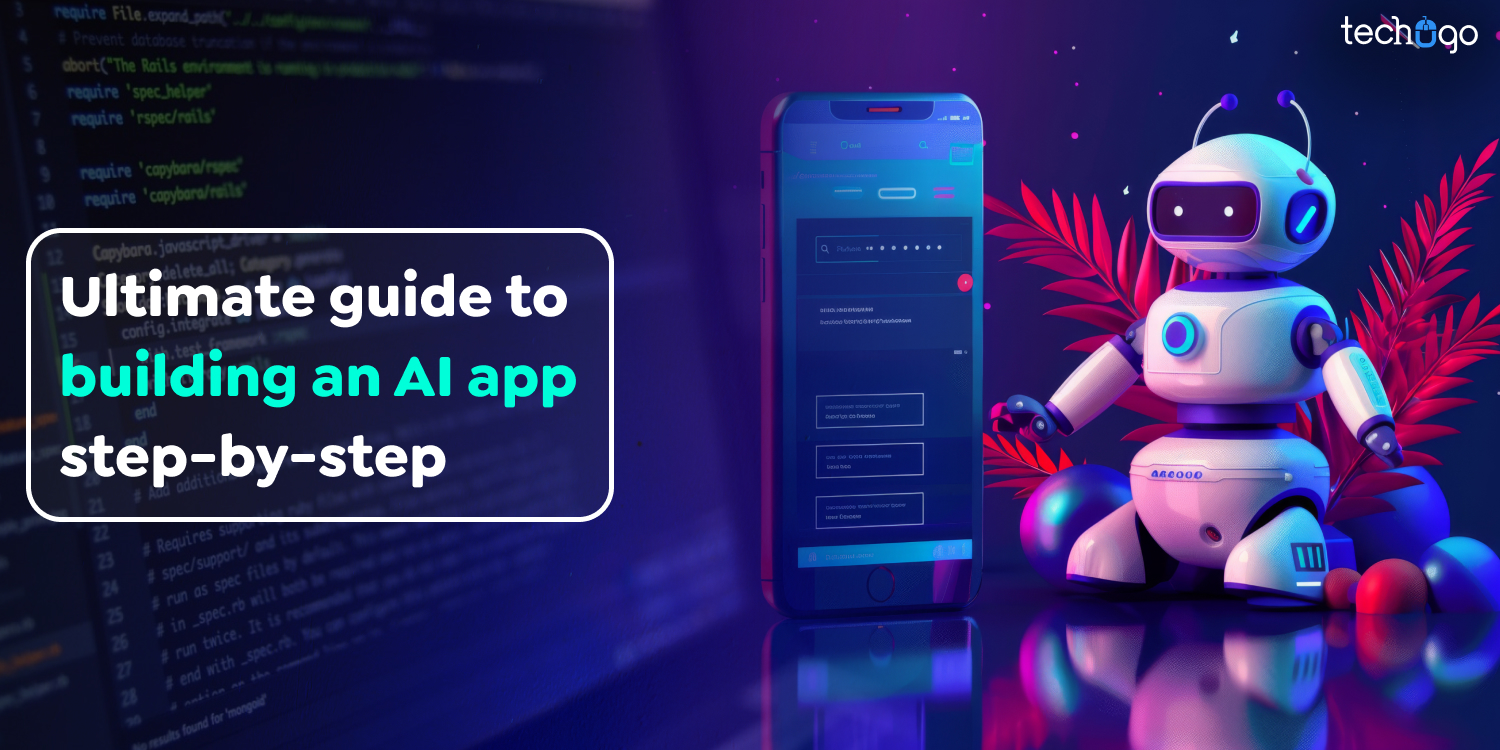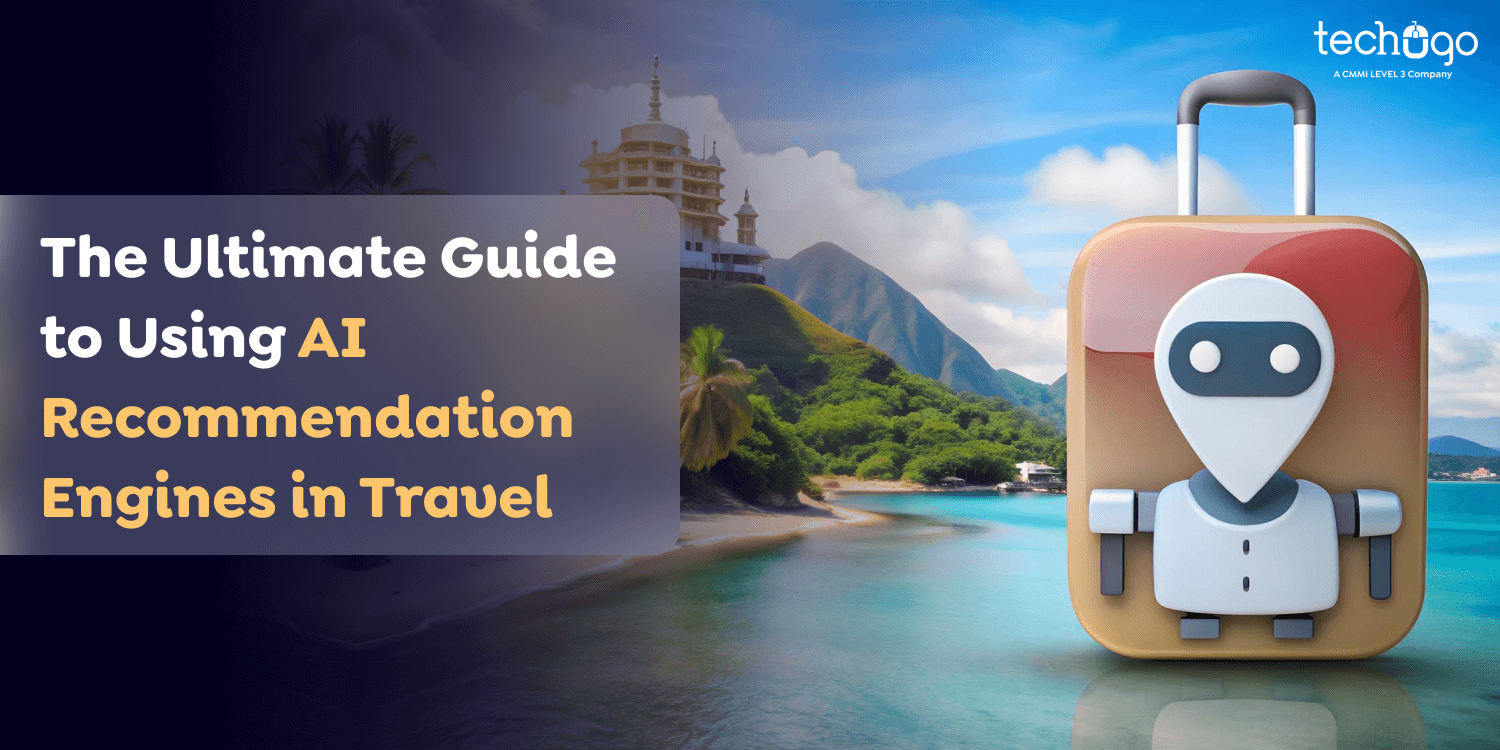21 Feb 2025
How to Create a Food Delivery App [The Complete Guide]
Matthew Connor

With consumers demanding more flexibility and convenience, the development of food delivery apps offers new ways to access food and other items. There’s no need to spend time searching through menus and making calls. Today’s customers expect seamless services delivered directly to their doorsteps. Food delivery app development has been well-known, but following the outbreak of the pandemic, its popularity exploded.
Even with major players like Uber Eats, Grubhub, and DoorDash in the marketplace, the market is not oversaturated. This means that developing food delivery apps can still be a profitable investment. However, it’s important to understand the basics and develop a solid business plan ahead of time.
It is estimated that the online food delivery market in Canada will generate an estimated revenue of CAD 23.15 billion by 2025. The market is projected to show an annual increase (CAGR 2025-2029) of 5.95%, leading to an estimated market size of around CAD 29.16 billion by 2029. This indicates significant demand for food delivery and ample business opportunities for those entering the market.
In essence, there’s a lot of money that can be made by investing in the food delivery app market. Whether you’re looking to develop an app for food delivery at your restaurant, set up a delivery app for a supermarket, or create a new app for food delivery, you’re in the right place.
What Is Food Delivery App Development?
Food delivery app development, at its core, is the process of creating, developing, constructing, and launching a mobile app that enables customers or app users to place orders online from local eateries, cloud kitchens, or even home chefs, and have the food delivered to their homes.
A food delivery app consists of three major components:
Customer App: Allows customers to browse menus, order items, make payments, and track deliveries.
Restaurant Dashboard: Enables restaurant owners to manage orders, create menus, and track profits.
Delivery Partner App: Helps delivery drivers receive orders, find routes, and complete deliveries.
The performance of a restaurant delivery app depends on a seamless user experience, real-time tracking, secure payment methods, and efficient order management. Additionally, businesses must incorporate AI-driven suggestions, GPS tracking, multiple payment options, and real-time order updates.
The development of a food delivery app, therefore, requires meticulous planning, the best tech stack, and an experienced development team to ensure smooth operation and scalability.
Benefits of Food Delivery App Development for Businesses
An effective food delivery business relies on a user-friendly, high-quality, feature-rich, and fast-running mobile application. If you haven’t yet invested in food delivery app development solutions, now is the best time to start. Unsure why?
This section highlights some of the main reasons why developing a food delivery app is the best way to make your mark in this highly competitive industry.
Expanding Customer Reach
Gone are the days when a restaurant’s clientele was limited to those who could physically visit the premises. By using an on-demand delivery service, restaurants can extend their reach beyond their location. According to Statista, by 2028, the number of users globally is expected to reach around 2.5 billion people using food delivery apps. This large audience offers unparalleled opportunities for food establishments to tap into new markets and attract unique customers.
Customized User Experience
Having a food delivery app benefits your clients. When they’re hungry, customers just need to open the app to place an order. The process is simple and convenient. Additionally, the food delivery app allows you to collect customer data and offer personalized menu recommendations.
When customers feel that the app understands their food preferences, they are more likely to engage with the app, explore different features, and make more orders. This not only benefits the users but also provides an opportunity for upselling and increased sales for your food delivery business.
Brand Visibility and Recognition
Your app’s visibility doesn’t just depend on the platform, it can be enhanced using strategies like App Store Optimization (ASO). By using strategically chosen keywords, appealing images, and informative descriptions, your app can rank higher in App Store search results.
As a result, when users browse app stores or search for food delivery services, they’re more likely to find your app. Once users download and regularly use your app, they’ll become more familiar with your brand.
Efficient Order Management
Many modern food delivery apps include order tracking features that enable customers to very easily track the location and status of their food at any time. Additionally, you can ask your food delivery app developer to incorporate routing optimization techniques.
This way, delivery workers can determine and follow the most efficient routes, reducing delivery times and operating costs. Furthermore, using an inventory management system helps prevent customers from ordering food items that are out of stock, leading to a smoother order process.
Data-Driven Decision Making
Food delivery apps record each customer’s order and maintain a record of their history. Analyzing this data allows you to understand your customers’ preferences, such as their favorite foods, cuisines, and ordering frequency. This information can help inform operational and marketing strategies. For example, you could adjust staff in the kitchen and delivery drivers during peak times and offer specials during slower times to boost sales.
Competitive Edge
Restaurants can benefit from the expanding market of on-demand delivery services, which gives them a distinct advantage. Online restaurants are in high demand as customers increasingly prefer delivery to home options. A restaurant without an online presence risks losing customers.
A well-designed food delivery app development should align with customer preferences and meet the restaurant’s goals, setting it apart from competitors. With an improved delivery service, restaurants can attract new customers and retain existing ones, thereby gaining a larger market share.
Business Models of Food Delivery Applications
If you’re considering food delivery app development, it’s important to be aware of the three primary business models prevalent in the food delivery app industry.
Platform to Consumer Model (P2C)
This model connects customers directly to service providers through a virtual platform. It uses advanced technologies to ensure smooth transactions and enhances the customer experience, allowing users to access products and services more conveniently and effectively. This is an efficient model because the platform can charge a fee to both the restaurant and the customer.
Delivery Service Aggregators
In this model, the platform acts as a bridge between the customer and the restaurant. If customers encounter issues with their delivery or orders, they can receive support from the platform on behalf of the restaurant. The platform charges a fee for this service, which is collected from the restaurant for each successful order.
Business to Consumer Model (B2C)
With the B2C model, a business offers its products or services directly to customers. Many companies have adopted online food delivery via their own platforms or collaborate with various service providers to offer their products. With the B2C model, platforms profit by charging a set fee for each successful purchase.
Key Features of Food Delivery App Development
For highly profitable on-demand food delivery app development, you must ensure it includes the right features. Here are the essential aspects you should consider for your app to ensure it’s heading in the right direction:
Customer Panel
Social Media Login
Many users or customers are active on social media platforms like Facebook, Instagram, X (formerly Twitter), etc. By integrating social media connectivity, customers can link their social accounts to the food delivery app and receive up-to-date information and news about food and restaurant products.
Push Notifications
It can be frustrating to wait for important updates on menus or offers from restaurants. Push notifications allow users to stay informed about the latest promotions as well as deals offered by the app or restaurants.
Place or Cancel Orders
Customers can place orders with a single click, including selecting their delivery address and payment method. However, there are times when things may need to change. Customers can easily modify or cancel their orders with the press of a button, should they change their mind for any reason.
Payment Options
A reliable food delivery service offers a variety of payment methods. Customers can choose from options such as COD (Cash on Delivery), debit cards, credit cards, PayPal, and others. The payment gateways are end-to-end encrypted to ensure the security of transactions.
Order Tracking
A live order tracking system allows customers to monitor the status of their food delivery. The tracking system shows the exact location and status of the delivery in an infographic format. It also provides an estimated delivery time and indicates whether the restaurant has dispatched the order.
Admin Panel
Interactive Dashboard
An interactive dashboard provides an overview of the registered restaurants, their total revenues, orders, and delivery companies. It also offers a visual representation of key performance indicators (KPIs) and user insights, helping admins make informed decisions when necessary.
Branch Management
Many restaurants have multiple locations within a single city. The admin panel helps manage all of them, such as approving or disabling menus, adjusting food prices, and managing items.
User Management
Administrators can perform various tasks related to users, including managing registered users, overseeing delivery partners, and more.
Revenue Management
Administrators can track daily, weekly, or monthly revenues, manage commission rates for delivery partners, and maintain financial and transaction records.
Analytics and Reporting
Administrators can access and generate detailed reports on sales, user orders, and engagement. Data visualization tools integrated into the system allow for the creation of visual reports, providing important insights to inform better decision-making.
Driver Panel
Profile Creation and Management
This feature allows drivers to create their profiles, including their name, date of birth, contact information, company-issued ID number, and profile photo. The profile management feature enables users to update and modify their profile, including editing the profile image and contact details.
Order Management
Delivery partners typically manage diverse lists of items to deliver. They can also control the delivery orders, including those awaiting delivery. Drivers can receive orders via the app and manage their deliveries accordingly.
Earnings Management System
The driver can view and manage earnings directly from the dashboard. Upon completing an order, the driver earns cash incentives, which are deposited directly into their profile within the app. The earnings can also be transferred to the driver’s bank account.
Delivery Information
Customers can access delivery details, including the address, the delivery person’s contact information, and the delivery location.
Navigation System
The navigation system helps delivery partners save time by providing step-by-step directions to the delivery address, ensuring a quick and efficient route.
Calling/Chat Feature
This feature enables the delivery partner to contact the customer if they need additional information regarding the delivery address.
How To Develop a Food Delivery App?
The food delivery app development process involves several stages, where you study the market, design the concept, and ensure it works and appears as intended. Below is the breakdown of the food delivery app creation procedure:
Market Study
The first stage of food delivery app development services involves market research and competition analysis. This is crucial because it helps achieve several objectives. First, you will gain an understanding of what functions well in the market and what features your customers expect and need.
Second, it will help you identify problems your customers face and provide solutions through your app. Market research also helps you identify your ideal user base and ensures the app meets their needs. A thorough analysis of your competition will also help you build a unique selling point or USP.
The Choice of the Strategy for Monetization
It’s crucial to choose the best monetization strategy for your app and build the app’s functionality around that strategy. The choice of monetization method will help establish key performance indicators (KPIs), determine expected revenues, and prepare for future expenses.
Select a Reliable App Development Partner
If you don’t have an experienced internal development team, we strongly recommend partnering with a reliable IT service provider for your food delivery app development. Outsourcing can be more cost-effective than internal development and offers a higher quality than working with freelancers. When choosing an IT company to collaborate with, review their portfolio and check if they’ve worked on similar projects before.
Pick The Platform, And Then The Technology Stack
The next thing to choose is which platform you would like your application to be able to run on. It can be mobile-based, native web or cross-platform. The platform you choose will affect the choice of your tech stack. In selecting the appropriate technology, look over the features of your food delivery app development to see what tools will assist you in implementing these functions.
Design and Develop
After you have decided which platform to use and what tech stack, it’s now time to build your app and refine its layout. Your developers need more details about how to go about it. Still, the primary concept is to make the app extraordinarily secure and user-centric. The user interface for all groups must be simple and aid users in achieving their primary purpose. For the code aspect, we suggest adopting secure practices for coding and testing through the creation process.
Test and Troubleshoot
Testing is a crucial element of every app development because it aims to identify the possibility of bugs, flaws or vulnerabilities within the product. In testing an app prior to the release date, QA testers typically test such things as its efficiency, usability, security and the ability to deal with unpredictable loads, and so on. This way, the users receive a fully functional app with no glitches or issues.
Release and Follow-Up
The final step of the development process will be the launch of the app into the marketplace and after-release maintenance and monitoring. As real-world conditions vary from that of the test environment unpredictable bugs could be discovered. Therefore, it’s important to devote some time to maintaining the application and should be handled by the same team of developers because developers understand the code in-depth.
Cost To Develop a Food Delivery App
On an average, a basic food delivery application with the most essential functions can range between CAD 30000 to CAD 40000. If you want additional features like live order tracking in real time, in-app help via chat or email, loyalty program and restaurant management software, the cost could range between CAD 130000 up to CAD 140000 or higher.
It is important to remember that these figures are merely estimations, and the actual costs could differ according to the specifics of your requirements and the design company you decide to collaborate with. To get a precise estimate of cost, it is highly advised to get in touch with businesses that provide catering app development and discuss your plan with them in depth.
The total cost of food delivery app development can also vary depending on the platform, as iOS and Android are the leading platforms for app development. The following factors influence the cost of developing a food delivery app:
- App Design
- Project Scope
- Location
- Developer Cost
- Mobile Wallet integration
How to Monetize a Food Delivery App?
Monetization is one of the most crucial aspects of the food delivery app development business model. If you’re considering entering the entrepreneurial space by developing a food delivery app, it’s essential to understand how you can generate revenue and make money through this online business.
It’s important to know that app operators have several ways to earn revenue. Typically, they combine (or often use each of) the methods described in detail below.
Delivery Fees
Delivery charges are the primary way for food delivery app development businesses to generate revenue. This applies to companies whose business strategy includes managing both deliveries and orders, such as Uber Eats or DoorDash. Essentially, customers pay fees for food delivery.
Some platforms use fixed charges, while others adjust the cost depending on the distance the driver must travel. While delivery costs help establish a steady revenue stream, they are not sufficient to support a business on their own. As a result, many successful delivery companies integrate this monetization method with other strategies.
Commissions
A different method used for monetizing food delivery services is to charge restaurants commissions on every order that is processed by the app. The most well-known brands in the market such as DoorDash usually offer commissions as high as 30%. In the end, this technique generates a substantial portion of the revenue. As previously stated, there are continuing policy-related discussions regarding the limitation of commissions. It is vital to stay alert and keep yourself updated in this area.
Advertisements
Some food delivery service owners include advertisements on their platforms to generate additional revenue. In this way, food establishments can pay for prominent positions in search results, helping them appear more prominently on the app. This feature helps draw in more patrons.
Subscriptions
You should also consider implementing subscriptions to increase revenue and provide more flexibility for your customers. Users can subscribe for a monthly fee and enjoy unlimited delivery service to restaurants in the area for eligible orders that exceed a certain amount. This is particularly attractive to frequent customers and provides a steady, reliable income stream. It also encourages larger order quantities, which can, in turn, boost the commissions earned.
Conclusion
Food delivery is no longer just a trend; but has now become a vital part of the contemporary dining experience. Restaurants should consider implementing an extensive food delivery application solution with numerous advantages in addition to increasing revenue, to improving the efficiency of operations and ensuring that customers are satisfied. While the market continues to grow, establishments that are investing in food delivery app will be in the forefront of technology to stay ahead of the curve and capitalize on potential opportunities.
Launching a delivery application will require careful evaluation of many elements, as is apparent from the data that is provided. From identifying the most important industry developments to examining different methods to monetize their business, leaders need to think through a number of issues before beginning the process. If you’re looking to build an app for food delivery make contact with a reputable developer of food delivery apps.
Get In touch
We are excited to here from you and let’s start something special Together. Call Us for any inquiry.
Write us
sales@techugo.caJust a call away
About you




